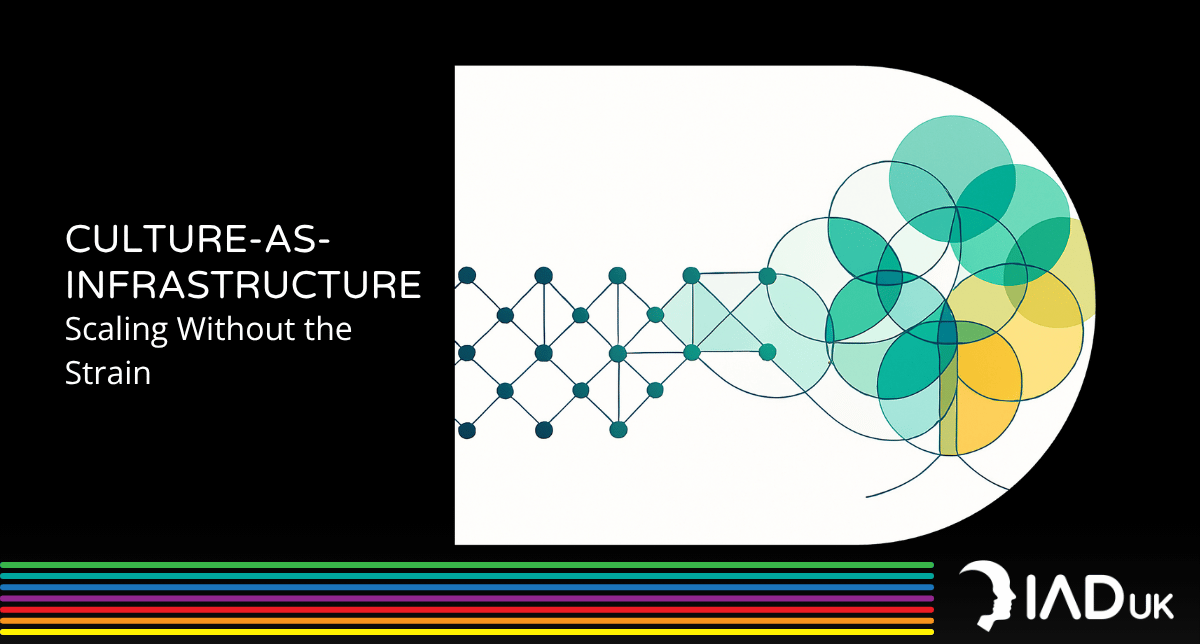Unlocking Your Leadership Potential with Constructed Development Theory
The Scale-Up Leader's Guide to Constructed Development Theory

In today's rapidly evolving business ecosystem, leaders at the helm of scale-up companies face a unique set of challenges. Steering a business through the treacherous waters of scaling, amidst stiff competition and constantly shifting market dynamics, requires not just vision but an exceptional calibre of leadership.
The path from startup to mature enterprise is fraught with complexity: every decision and strategy must be executed with precision, agility, and innovation to capitalise on growth opportunities while avoiding potential pitfalls. Traditional leadership models, often rigid and prescriptive (or just outright wrong - see for example CDT and the Servant Leader), are increasingly inadequate to meet these demands. In this context, enhancing leadership effectiveness is not just beneficial—it's imperative for survival and success.
Constructed Development Theory (CDT) is The theory of how Aware we are of our Construction of self, context and environment in the moment and how effective we are in this construction. It is a revolutionary approach that promises to redefine leadership efficacy. At its core, CDT offers a framework for understanding and enhancing the cognitive complexity behind leadership decisions and behaviours. CDT equips leaders with the tools to navigate the intricacies of scale-up challenges with greater Awareness and Choice and, thus adaptability.
In this introduction I will outline how CDT promises to unlock the latent potential within every leader, fostering growth, innovation, resilience.
CDT as a Leadership Model

Constructed Development Theory (CDT), while fundamentally a theory of adult development, naturally extends into a compelling model for leadership development due to its focus on self-awareness and thinking complexity. This transformation from a developmental framework to a leadership model occurs as the principles of CDT directly address and enhance the core competencies required for effective leadership in today's complex business environments. Let's explore how CDT underpins a novel approach to leadership.
Increasing Self-awareness
CDT emphasises the critical role of self-awareness in adult development, which is equally fundamental in leadership. By encouraging leaders to become more aware of their Cognitive Intentions and Thinking Styles, CDT fosters a deeper understanding of their intrinsic motivations, biases, and patterns of interaction with others. This heightened self-awareness enables leaders to:
- Recognise their strengths and areas for growth.
- Adapt their leadership style to meet the needs of their team and the demands of different situations.
- Mitigate biases that might cloud judgment or decision-making.
- Improve interpersonal relations through better understanding of diverse perspectives.
- Enhancing Thinking Complexity
A core proposition of CDT is that adult development involves increasing one's capacity to handle complexity through more sophisticated thinking. In the context of leadership, thinking complexity is a crucial attribute that allows leaders to:
- Navigate the multifaceted challenges and ambiguities inherent in leading organisations.
- Make informed decisions by considering a broader range of factors, potential outcomes, and perspectives.
- Innovate and find creative solutions to problems by integrating diverse sources of information and viewpoints.
- Foster a culture of continuous learning and development within their teams, promoting organisational adaptability.
CDT as a Leadership Model
Considering these aspects, CDT serves as a leadership model in several key ways:
- Framework for Growth: It provides a structured approach for continuous personal and professional growth, emphasising the development of thinking complexity and dynamic intelligence as central to leadership effectiveness.
- Adaptive Leadership: By promoting a deeper understanding of oneself and enhancing the capacity to deal with complexity, CDT prepares leaders to adapt their strategies and approaches in real-time, a critical skill in today's fast-paced world.
- Cultivating Leadership Throughout the Organisation: CDT's emphasis on individual development aligns with modern leadership paradigms that seek to cultivate leadership qualities across all levels of an organisation, not just at the top.
- Enhancing Organisational Culture: Leaders who embody the principles of CDT can influence the broader organisational culture, promoting values of self-awareness, continuous learning, adaptability, and complexity handling. This can lead to more resilient, innovative, and effective organisations.
- Ethical and Inclusive Leadership: The self-awareness and complexity handling promoted by CDT encourage leaders to consider the broader impact of their decisions, fostering ethical considerations and inclusivity in leadership practices.
In summary, Constructed Development Theory transcends its roots in adult development to offer a robust leadership model. It addresses the need for leaders who are not only self-aware and adaptive but also capable of fostering environments that encourage growth, innovation, and ethical practices. By integrating the principles of CDT into leadership development, organisations can cultivate leaders equipped to navigate the complexities of the modern business landscape effectively.
Core Concepts

Having set the stage for how Constructed Development Theory translates to a Leadership Model, let’s dive a little deeper into the core concepts of CDT.
Cognitive Intentions
Cognitive Intentions are mental shortcuts or strategies that individuals unconsciously utilise for problem-solving and decision-making. These intentions guide how we process information, react to situations, and interact with the world around us. They are the foundational elements that determine our thinking patterns, behaviours, and ultimately, our Responses to various contexts and challenges. Cognitive Intentions operate largely beneath our conscious Awareness, yet they drive much of our observable behaviour.
Thinking Styles
A Thinking Style, in the context of Constructed Development Theory, is the aggregate or overall pattern of an individual's use of various Cognitive Intentions. It represents a higher-level manifestation of how an individual typically thinks and approaches problems, based on their preferred mix of Cognitive Intentions. Thinking Styles are relatively consistent across different situations, however they can evolve over time with intentional development and new experiences.
Dynamic Intelligence
Dynamic Intelligence is the process of how we construct our self-Awareness in the moment, our ability to discern and choose a Thinking Style appropriate to the context. This process starts with our Intentions. Our level of Awareness of those Intentions how much Choice we have over our Responses in the moment. The greater our level of Awareness (the higher our Awareness Quotient (AQ)), the greater our level of Choice. This capability to choose how we construct ourselves in the moment, the outcome of Dynamic Intelligence, is called Dynamic Awareness and is a reflection of our thinking complexity.
The way leaders process information, make strategic decisions, and interact with others is a function of their Dynamic Intelligence. Leaders with higher Dynamic Intelligence, are better equipped to navigate the complexities of leadership, including team dynamics, strategic planning, and organisational change.
Enhancing Leadership Effectiveness with Constructed Development Theory

If you’ve read this far and are, at least tentatively, nodding ‘Yes’ to the concept of of CDT in a Leadership Context, then it’s only fair that to give you something to get you started.
In Best Practice, that start would be with a deconstruction of your unique Thinking Style highlighting the imbalances in your Awareness of your Cognitive Intentions, your cognitive biases, and where you can best expend effort to develop greater Choice in your thinking, and thus Responses to the diverse situations you will find yourself in.
However, whilst recognising the limits of self-reflection, it’s still possible to get some of the benefits of CDT in areas where you have a little more time to think, where you can reflect on your thinking before making a final decision.
When working through a problem, whether it’s a decision that needs to be made or a strategy you are trying to define take the time to regularly check-in with yourself and ask yourself questions like:
- How can I think about this differently?
- How might I be wrong?
- What am I not considering that’s just as important?
Questions like these will help to jolt you out of your usual Thinking Style and prompt you to use different Cognitive Intentions available to you. You might also want to ask these questions of others, particularly those that you know think about things differently to you.
When you start to realise the benefits of adopting different Thinking Styles, you’ll want to consider that deconstruction as it will show you where your limitations are, identifying opportunities for development, or where greater specificity in input from others would be beneficial.
Additional Resources
If you want to learn more about CDT and it’s applications in Leadership situations, then check out our other articles or our YouTube channel.
If you’d like to know more about how the Institute can help to develop the Dynamic Intelligence of you, your leadership, or even your entire organisation, then read more about our Dynamic Intelligence Development System ™.
Alternatively, book a complementary call with us to find out how we can help you and your business to become truly exceptional.




